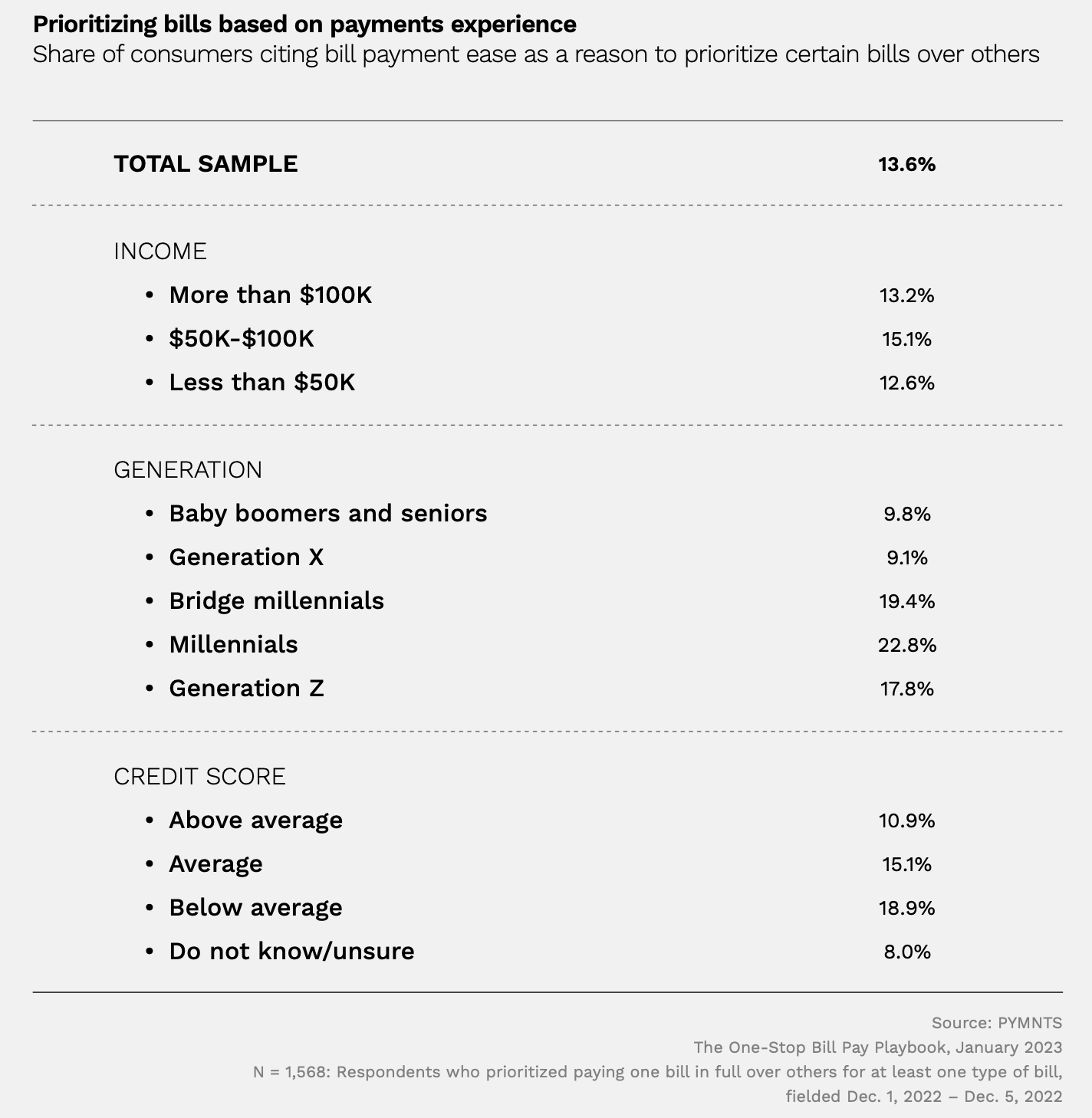14% of Consumers Prioritize the Bills Easiest to Pay

The ease of bill pay can help decide what gets paid and what doesn’t when consumers are under the kind of financial pressures they’ve been experiencing since early last year.
The dynamics of these patterns were analyzed in the study “The One-Stop Bill Pay Playbook,” a PYMNTS and Mastercard collaboration. We surveyed 2,140 consumers about how they are managing bill payments amid rising inflation.
 As the study found, in the prior 12 months, 40% of consumers surveyed made a partial payment toward at least one bill and did so for an average of two providers. Twenty-seven percent completely skipped at least one bill payment, doing so for 1.8 providers, on average. Consumers are least likely to skip insurance and home internet payments and most likely to skip payments for retail products and digital media subscriptions.
As the study found, in the prior 12 months, 40% of consumers surveyed made a partial payment toward at least one bill and did so for an average of two providers. Twenty-seven percent completely skipped at least one bill payment, doing so for 1.8 providers, on average. Consumers are least likely to skip insurance and home internet payments and most likely to skip payments for retail products and digital media subscriptions.
Friction in the payments process has a significant impact on how overstretched consumers decide which bills to pay, with 14% of respondents saying they prioritize payments to billers that provide lower-friction payment experiences regardless of other factors.
When looking at demographic breakdowns of bill-payers and their preferences, the study stated that “the valuable millennial segment is more likely than any other age group to place a high value on seamless payments experiences, with 23% of this cohort saying they will pay bills with the least payment friction first. Nineteen percent of bridge millennials and 18% of Gen Z bill-payers indicated the same. This factor is one that companies can control, unlike whether a consumer considers a service to be essential.”
It again underscored the role of friction, with the study noting: “The ease of making payments plays a significant role regarding which bills cash-strapped consumers will prioritize, particularly among the increasingly important millennial and Gen Z age groups. Ensuring seamless bill payment experiences and minimizing related frictions will reduce churn and lost revenue due to non-payment, giving service providers a leg up on the competition.”
